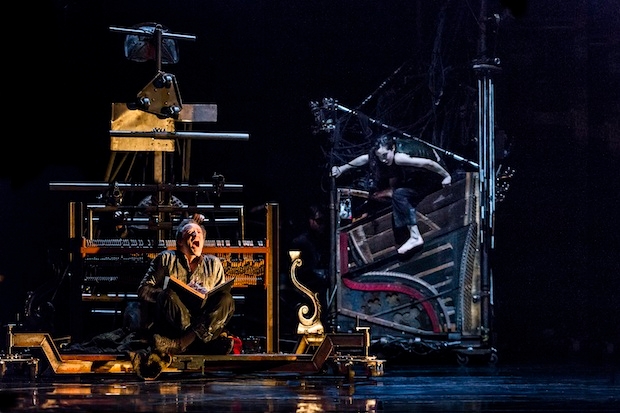What’s in a definition? As far as theatre dance is concerned, quite a lot. Labelling — and often labelling for the mere sake of it — is integral to our dance culture. Take, for instance, the various A-level dance syllabuses, the curricula of most dance-studies departments and, most of all, those dance-history manuals that slavishly perpetuate simplistically formulated principles and equations. Any of those will provide you with a neat definition of postmodern dance, stating that it started in the early Sixties, when some US-based artists decided to fight convention by stripping dance of its most traditional characteristics.
What most of these sources don’t tell you, though, is that there’s also European postmodern dance. This also took to task convention and tradition, but, instead of removing any surplus, it went for an overwhelming game of rich and varied visual narratives that relied on props, sets, lighting, projections, and more. This ‘other’ postmodern dance, seldom acknowledged in Anglocentric texts and dance circles, was the equivalent of European avant-garde theatre and théâtre de recherche. Personally, I never thought it fair to relegate such an affirmed genre to a label that does not do it any justice. After all, performances such as James Thiérrée’s Tabac Rouge have little or nothing to do with the standard notion of postmodern dance.
An acclaimed performance-maker, Thiérrée is of illustrious lineage, as he is a descendant of Charlie Chaplin and the son of Victoria Chaplin. His works are constructed on a well-concocted blend of diverse performance idioms, in line with the principles that were at the core of his mother’s Cirque Bonjour and its subsequent incarnations, Cirque Imaginaire and Cirque Invisible. Tabac Rouge is no exception. Mime, dance, acrobatics, contortionism happily converge to provide 90 minutes of action, framed by and within an overabundance of visual ideas.
Indeed, it is the sets, starting with the dauntingly dominant metal frame, and the various props, including an incredibly gadget-rich writing desk and a spaceship, that are constantly centre stage. Their neoromantic, postmodern baroque forms evoke, more or less intentionally, continental cinema — I am sure I am not the only one to have thought of The City of Lost Children (1995), which boasted Jean Paul Gaultier’s costumes. It’s a pity that, apart from the odd exquisite reference and intertextual citation, they do not add much else.
Constrained in a game of bodies versus props and sets, the action reveals its weaknesses long before the 90 minutes are up. It matters little if, now and then, the artists of Compagnie du Hanneton strive to elicit surprise and interest with the odd acrobatic or contortionist-inspired stunt. Nor if Thiérrée himself, as a sort of dying, tobacco-addict mad-scientist figure, regales us with verses from Pier Paolo Pasolini’s poems, or if his chorus of ninja-like women move across the stage like creepy-crawlies, thanks to the support of wheeled planks. None of these ideas gels with another, and the whole thing ends up looking as if both the performance-maker and his artists are still desperately searching for a central idea or an overarching theme. Don’t get me wrong, everyone’s efforts are commendable, but the novelty rapidly wears off, paving the way to boredom. A postmodern boredom, maybe, but boredom nonetheless.






Comments